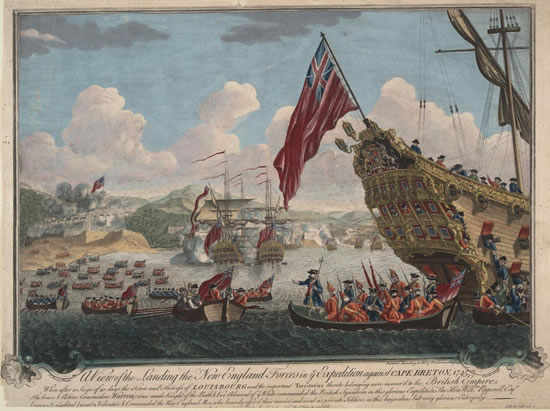Why did the French and Indian War Happen?
The French and Indian War, also known as the Seven Years War, began in the Spring in 1754. The dispute arose over the presence of British and French settlers in the Ohio River Valley (in and around present day Pittsburgh, Pennsylvania), but resulted in battles that were fought far from there. Both the French and English wanted exclusive rights to the area because of its economic potential and plethora of fur-bearing wildlife. Despite attempts in Europe to solve the territory battle diplomatically, no compromise could be made. French settlers began building forts along the Ohio River to protect the land from the British. Meanwhile, Robert Dinwiddie, lieutenant governor of Virginia, had begun issuing land-grants in the region for members of his colony. French and British military forces were both authorized by their respective governments to take the necessary measures to remove the other.
 |
| Join, or Die Woodcut Made by Benjamin Franklin Symbolized Colonial Unity in the French and Indian War |
George Washington's Men Fired the First Shots
Upon hearing news of the French forts, Dinwiddie sent 21 year-old George Washington, to deliver a British ultimatum to French colonists. The French refused to leave and built a fort at the source of the Ohio River which they named Fort Duquesne. The following May, Washington, now promoted to lieutenant colonel, returned to the area with 160 armed Virginians. Washington then ambushed a French reconnaissance party at what came to be known as The Battle of Jumonville Glen. In preparation for a French counterattack, Washington ordered the construction of a makeshift stockade which he named Fort Necessity, south of present day Pittsburgh. Less than a month later, the French ambushed the fort, which resulted in Washington's surrender, and the capture of Fort Necessity. The French promptly burned the fort to the ground and gained control of the region.
Initial Success for the French
For two years, the French controlled the region. When British Commander Edward Braddock and forces attacked Fort Duquesne in 1755, his army was routed and he was killed. While the French successfully defended their interests in the Ohio Valley, they were losing the battles elsewhere in North America especially in points along the shores of Lake Ontario.
The British Strike Back
In 1756, British Prime Minister William Pitt devised a comprehensive military plan to defeat the French, not only in the Ohio River Valley and North America, but in other regions of contention such as India, Africa, and the oceans. Pitt committed large numbers of troops to North America who had permission to garner supplies at will from civilians. Citizens were also forced to serve in the military. While his tactics were successful in driving back the French, he was forced to relent when a 1757 uprising concerning his laws nearly tore New York City apart. Nevertheless, the British had the upper hand in North America. In 1758, they captured Lake Ontario and Louisbourg, Nova Scotia. The capture of Fort Frontenac on Lake Ontario effectively severed communications between the French headquarters in Montreal and their forces in the Ohio Valley. Louisbourg gave the British control of the Bay of St. Lawrence. That same year, British forces teamed up with local Indians to take Fort Duquesne from the French. It was renamed Fort Pitt.
 |
| The British Take Louisbourg, Nova Scotia |
The French Surrender
The turning point in the war occurred on September 13, 1759, when British General James Wolfe defeated French forces at Quebec in a siege that lasted almost two months. Montreal and Detroit, the other two French strongholds would fall soon after. In 1760, the battered French Army surrendered at Montreal. The entire nation of Canada was relinquished to the British. As part of the 1763 Treaty of Paris, The French lost not only Canada but also all lands in America east of the Mississippi River.